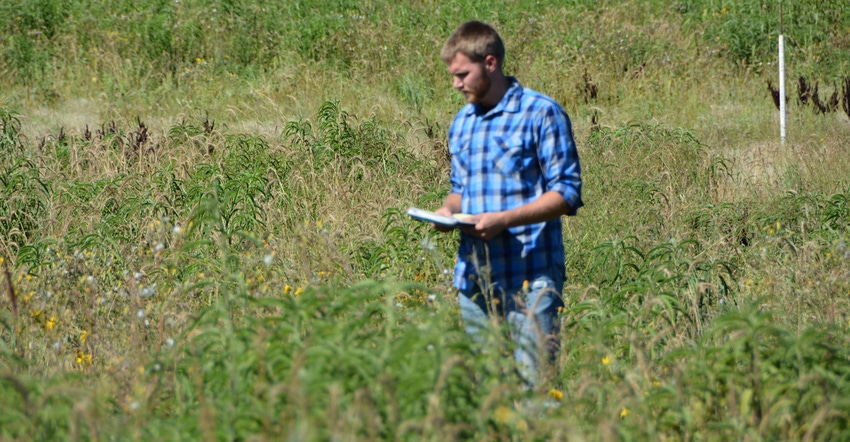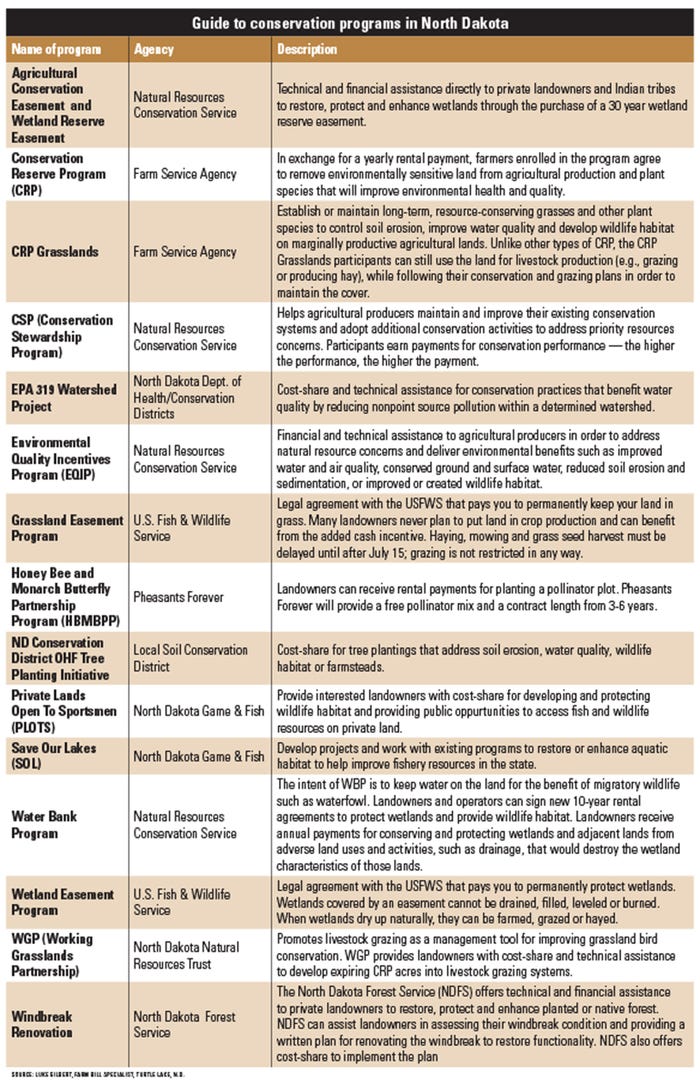December 26, 2016

There are a lot of programs available to help you get conservation on your land. You are probably well aware of the big programs, like the Conservation Reserve Program, but what about the Honey Bee and Monarch Butterfly Partnership Program? Or the Save Our Lakes Program? Or the Windbreak Renovation Program?
And there is cost-sharing and grant money available for conservation from a wide variety of public and private sources, too. Some of the sources you might not even think of, like Pheasants Forever, Ducks Unlimited and North Dakota Game and Fish Department. So who can help you sort through it all?
In North Dakota, you can turn to a new team of Soil Conservation District specialists. There are eight in the state now, working out of Natural Resources Conservation Service offices. Each covers several counties. “We’re not experts in every program,” says Luke Gilbert, a specialist at Turtle Lake, N.D., “but we know who to call to get all the details to help you out.”
Farm funding
The Soil Conservation District specialists were hired and are being funded by a unique alliance of agriculture, conservation and wildlife groups. Members include:
North Dakota Association of Soil Conservation Districts
North Dakota Game and Fish Department
North Dakota Natural Resources Trust
North Dakota Grain Growers Association
North Dakota Farm Bureau
Ducks Unlimited
Pheasants Forever
Delta Waterfowl
North Dakota Wheat Growers Association
S. Durum Growers Association
North Dakota Corn Growers Association
North Dakota Soybeans Growers Association
Natural Resource Conservation Services
The alliance hired individuals with wildlife, biology and/or environmental degrees who had either grown up or were still involved in a farm or ranch, or who had farm or ranch backgrounds. “We wanted people who understood the importance of having conservation on working lands,” says Brian Johnston, North Dakota Association of Conservation District’s executive director, who heads up the program and supervises the employees, though they get their daily instructions from local NRCS staff.
“I think this is very positive for conservation, wildlife and ag groups to work together on a program that helps us all,” says Jerry Doan, of Black Leg Ranch, Menoken, N.D., and a Natural Resources Trust board member. “There are eight of these positions now, with the potential to add more as the need arises. All of these groups are sharing in the cost of this program, which is important. I, as a producer, feel very strongly that conservation, wildlife and ag groups need to work together on many issues where we have common goals. We are stronger together, and we can send a unified message to the consuming public.”
Mary Podoll, the Natural Resources Conservation Service state conservationist in North Dakota, says the help from farm bill specialists is welcome. “Federal dollars matched with local and state entities/organizations ensure that local resource conservation is the priority and that technical assistance is available to producers,” she says.
Jonas Davis, Ducks Unlimited manager of conservation programs, is pleased, too. “It’s been a successful partnership to serve North Dakota producers and get more conservation on the land,” he says.
To contact a Soil Conservation District specialist, call your local NRCS or Soil Conservation District office.

South Dakota connection
To make it easier to learn about conservation programs available in South Dakota, the South Dakota departments of Agriculture and Game, Fish and Parks have a website called Habitat Pays. The site serves as a one-stop shop for finding state, federal and non-governmental conservation programs that provide cost-share or technical assistance. The website includes contact information for a variety of habitat advisers who will meet with landowners to learn the goals they have for their operation and advise them about options available to meet those goals. It also features landowner video testimonials about how they are working in concert with their local adviser to enhance habitat on their property.
You May Also Like




